'Farleys gave her the incentive to heal herself': Inside war photograher Lee Miller's 1940s farmhouse refuge
 Sky UK Ltd
Sky UK LtdAfter the wartime horrors she witnessed, the photographer – now the subject of a biopic, Lee, starring Kate Winslet – settled into life at Farleys, an art-filled farmhouse in East Sussex. "Farleys gave her the incentive to heal herself," her son Antony Penrose tells the BBC.
Something feels familiar about the uneven features of the smiling face painted on a tile above the kitchen range. Then my guide confirms: the tile is a Picasso. This historically fat-splashed artwork, at Farleys Farmhouse in East Sussex, speaks of frivolity, hospitality and famous friendships. All are relevant to the life lived here by Vogue-model-turned-war-photographer Lee Miller and her Surrealist artist husband Roland Penrose. Yet there is a deeper story.
Suffering from PTSD, and increasingly alcohol reliant, Miller slowly rebuilt herself there after reporting from the frontline and death camps of World War Two. That's an experience portrayed by Kate Winslet in Lee, the newly-released biopic that the star also co-produced.
"It was quite crude to begin with," Antony Penrose explains of Farleys, which his parents bought in 1949. "For the first six to eight years, there was no heating. Water was from a well and looked like tomato soup because of the iron."
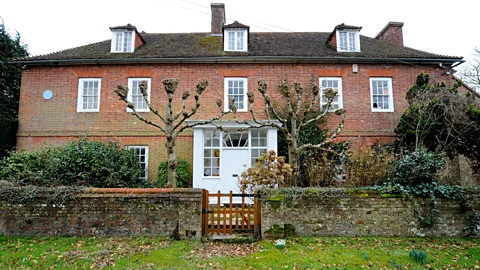 Alamy
AlamyMiller threw herself into renovating the creaky 18th-Century buildings, and supplementing friends' post-war rations with food grown and raised on the farm at Muddles Green near Chiddingly. She later became a gourmet cook, hosting notable friends (the likes of Miró doodled in the guest book) in what had become an art-stuffed home.
It was her final reinvention in a multi-faceted life. Fittingly, Antony, who now runs Farleys House & Gallery as a museum and archive, titled his mother's biography The Lives of Lee Miller. The film Lee is partly based on his book.
Born in Poughkeepsie in the US, Lee Miller was "discovered" as a model on a New York street when Conde Nast himself pulled her from the path of a car. She went on to appear frequently in Vogue.
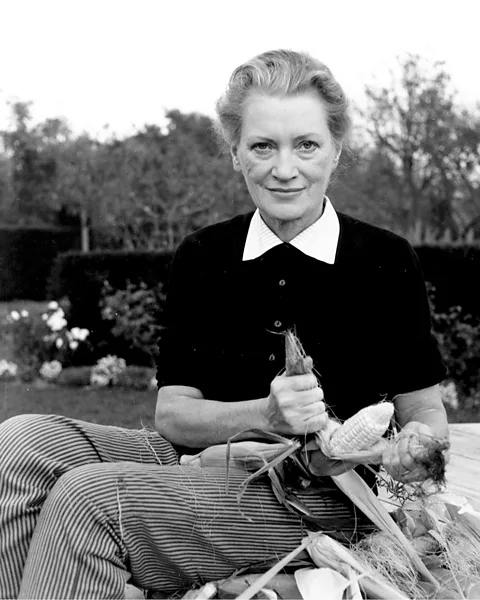 Roland Penrose/ Lee Miller Archives
Roland Penrose/ Lee Miller ArchivesOn the lounge wall at Farleys is the career-ending 1920s advertisement for Kotex sanitary products, which used Miller's image. Shocked fashion houses no longer wanted her modelling their gowns, but unconventional Lee laughed off the supposed scandal, and promptly moved behind the camera. With typical audacity, she arrived at Man Ray's Paris studio as an unannounced apprentice. The two (later lovers) went on to develop the darkroom technique of solarisation.
Lee initially had a portrait studio, then began to photograph fashion and other subjects, with a sharp eye for surreal juxtapositions. A short-lived marriage took her to Egypt. Then, as war raged in Europe, she gained US Army press accreditation, entitling her to become one of the few female correspondents. She persuaded Vogue to shake up its editorial and run her first-hand reports.
Our Farleys guide shows us the knuckle dusters Miller wore for protection – "bronze for daywear, silver for evening wear," the photographer had quipped, with an ironic nod to her glamorous early career. In the cookbook-lined study, there is a pair of German binoculars, and on the wall a photograph of her contemptuously bathing in Hitler's Munich apartment, her boots staining the mat with mud from newly liberated Dachau.
Such trophies were not displayed during her lifetime. Miller's wartime experiences became so buried that Antony, born in 1947, only learned of them when his wife discovered the shocking photos and dispatches in Farleys' attic after his mother's death.
Miller lingered in Europe, reporting for months after liberation before joining Roland in London. After Antony's birth, she moved on to the new challenge of Farleys, where the kitchen became her stronghold.
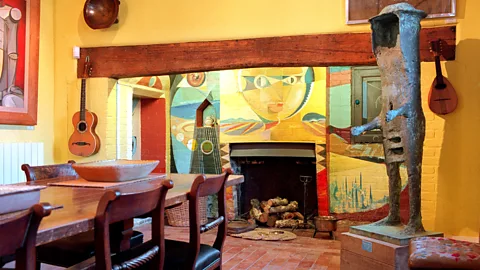 Tony Tree/ Lee Miller Archives
Tony Tree/ Lee Miller ArchivesPatsy Murray, the couple's housekeeper (who later regularly scrubbed the Picasso tile), would be "endlessly doing the donkey work", Antony tells the BBC. At the same time, Lee was a "flamboyant figure" who would arrive from London for the weekend and arrange for the gardener to bring in armfuls of vegetables.
More like this:
• The photographs that skewer British peculiarities
"Food rationing was on till 1954, so the first five years at Farleys were spent cooking like fury and carting a whole lot of stuff up to London to distribute among friends," Antony explains. "For my parents, it was really important that they had vegetables. They’d knock over a pig and get the pig cut up… and then there'd be milk, and they'd try to make butter and cheese and so on. It was a real focus for Lee; she used all her skills and ingenuity in the purpose of feeding people."
He now understands that drive. "She had witnessed the most appalling scenes of mass starvation that you can imagine. She had been at the liberation of four concentration camps where people were more like skeletons than human beings, and I think that touched her very deeply. She was very concerned about people's welfare in general but feeding people in particular."
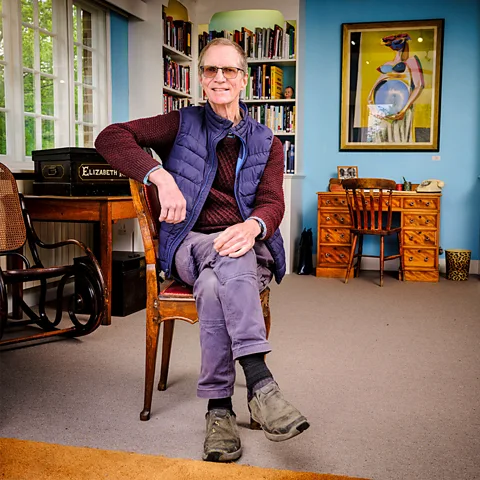 Alamy
AlamyLater, in more relaxed times, Lee took an advanced Cordon Bleu course and busied herself creating complex, surreal-slanted meals. Ever provocative, her repertoire included "cauliflower breasts", doused in a pink mayonnaise.
Working guests
An array of half-used spices, unfamiliar to most mid-century UK kitchens, still sit on her shelves. An ink drawing by Picasso, inspired by a bull on the farm, hangs over the table where the artist and other friends once made themselves useful chopping vegetables.
In fact, following fashion shoots around the local village, Lee's final Vogue photo essay was humorously entitled Working Guests. Created at Farleys in 1953, it features New Yorker cartoonist Saul Steinberg wrestling with a hose, MoMA director Alfred Barr feeding the pigs, and Henry Moore adjusting his sculpture, which once sat amid the many artworks in the garden.
When it was time to eat, guests would gather in the yellow-walled dining room under paintings by Roland and his Surrealist contemporaries. Its most striking feature remains the large fireplace Roland covered with a fantasy mural inspired by the nearby South Downs chalk figure The Long Man of Wilmington.
Awards Watch
Kate Winslet has been nominated for a Golden Globe Award for Best Performance by a Female Actor in a Motion Picture - Drama for Lee. Click here for more on the films getting awards buzz.
Sometimes, the table would be set with a silver-plated King Kong ornament, which subverted the fine centrepieces in stately homes. It’s the kind of amusing detail Antony says visitors should look out for around the house.
Farleys is certainly eclectic. Among many objects displayed in the vivid blue corridor are terracotta figures from Tenerife, a symbolic carving from Scotland's New Hebrides, a mummified rat (found under the floorboards), an advert for salt cod, and a badger skin.
There is a lack of showiness and hierarchy. On the dining room dresser, Picasso's hand-painted plates sit alongside kitsch junk shop finds that caught the couple’s eyes. The whole place suggests warmth and humour
 Alamy
AlamySo, did Miller find some peace here? "I don't think being at Farleys had a magical quality," her son reflects. "What I think it did was it gave Lee the opportunity and the incentive… the propulsion, if you like, to heal herself, because she liked the place, it was what she described as a 'big barn of a house', and she wanted to make it comfortable, and she loved entertaining the guests.
"It was a kind of challenge for her," he adds. "She was very resilient in practical terms, very resourceful... that was healing for her. It wasn't healing in the sense that she sat under an apple tree contemplating nature."
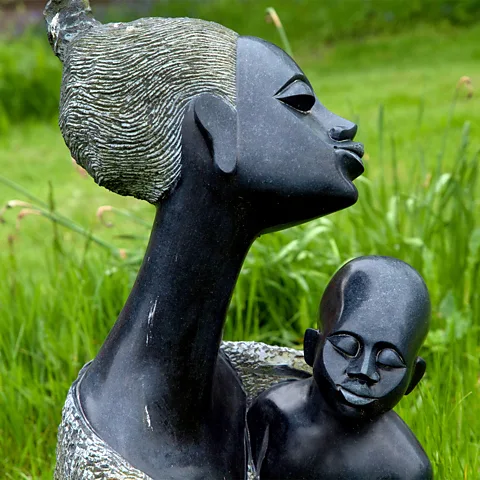 Alamy
AlamyWinslet’s propensity for playing "daring" characters and "grounded" disposition caused Antony to mentally earmark her to play his mother long before a movie was planned. Once involved, the actor became so committed to telling Lee's story that she spent years helping raise the finances. Though onsite filming was limited to establishing shots, naturally the actor spent time exploring Farleys and its archive. Like the famous creatives before her, she was photographed for Vogue at the kitchen table and in the garden.
Next autumn, London's Tate Britain will display the country's most extensive retrospective of the photographer's work to date. Antony hopes this, and the newly released biopic, will help continue his and his daughter Ami Bouhassane's drive for more recognition of Lee's extraordinary life and talent.
"[Originally] people were regarding her very strongly as Man Ray's muse and Picasso's muse and Roland's muse, and we started to object to this because it makes her very passive," he explains. "She wasn't just a beauty… she was a positive agent in her own right…someone who gets out there and kicks ass and does stuff."
--
If you liked this story, sign up for The Essential List newsletter – a handpicked selection of features, videos and can't-miss news, delivered to your inbox twice a week.
